What’s going on at Flesk?

With the summer winding-down I am turning my focus toward our latest batch of books. There are five titles that form our next wave of art collections. These will be released between this fall and into the spring of 2020. Each of these books has been in some stage of development from anywhere between 1 to 13 years. They include monograms on Frank Cho, Bruce Timm, Brad Kunkle, Edwin Austin Abbey, and Jeffrey Alan Love. Some of the details for each project is outlined here. I’m including Al Williamson and Mark Schultz as supporting guests as I share some behind the scenes stories.

The Art of Frank Cho
The first book that I will share the details about is a big Art of Frank Cho collection. Frank has brought up the idea of a large book for years. During a quiet period about a year ago I began to assemble this book. Over the course of a few weeks I worked with Frank to map out a book that spans his entire career that runs over 300 pages. During my visit to Maryland during the 2018 Baltimore Comic-Con I spent some extra time with Frank and scanned original art from his archives. Then, in February 2019 I visited Frank again when we fleshed out the book some more and I scanned a bunch of more material for the book. It was common to work on the book for 2-3 days, then to take a few months off before another window opened where we could align and do some more work on it together. I’m looking at the book now and realizing how close it is to being done. It’s amazing how a few days here and there over the course of a year or two can result in a book.
Since we haven’t looked at the book over the summer, we have two fresh pairs of eyes on it. We have tweaked one of the sections by cutting back on the Liberty Meadows section and inserting some of his latest works. At the moment Frank is working full time on his upcoming Fight Girls comic for AWA, his regular Harley Quinn covers for DC Comics, and the occasional comic cover for other publishers. This makes his time available to focus on this book limited. We are squeezing in an hour here and there to wrap it up. I never want to stress Frank out by being pushy, so we are working at his pace to get this done. The only thing that Frank has left to do is the cover and to provide the remaining captions. We’re in a good groove and hope to have it done very soon.
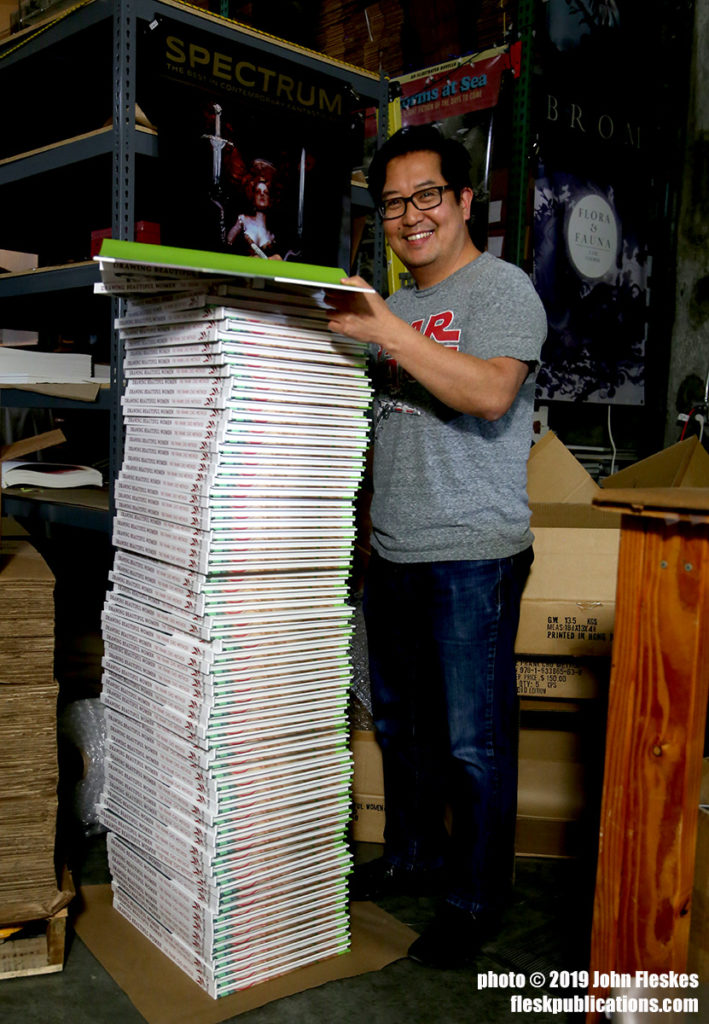
The way I work with every artist is different, yet the same factor of it being very personal is consistent. With Frank we do everything over the phone. We talk for anywhere between 1-3 hours at a time, usually chit-chatting about random things as we both work while keeping each other company. What I’ll do is send Frank a PDF of the book which he will look over, usually while he is drawing a Harley Quinn cover. Based on his feedback and our discussion I’ll tweak and adjust things as we talk about totally random things. I’ll send him a new PDF once I’ve made a series of fresh improvements. Frank gives it a look, we talk about it, then I tweak it some more. We go back and forth like this for hours. It’s easy, very organic, and we are always in sync with one another. It’s a pretty smooth and enjoyable process. When I work with Mark Schultz and Gary Gianni, it is very similar to this, with the exception that they are not working on comic covers at the same time. Frank is always backed up with so many projects, he usually has to continue working.
With Frank, we usually work and talk late at night. Between 8:00pm to midnight my time, which is 11:00pm to 3:00am his time. We both work best with creative stuff at night—especially since we can focus uninterrupted. For me, the daytime is reserved for running the business and while being on daddy duty. Since we are the same age and in similar family situations, we can relate to one another easily.
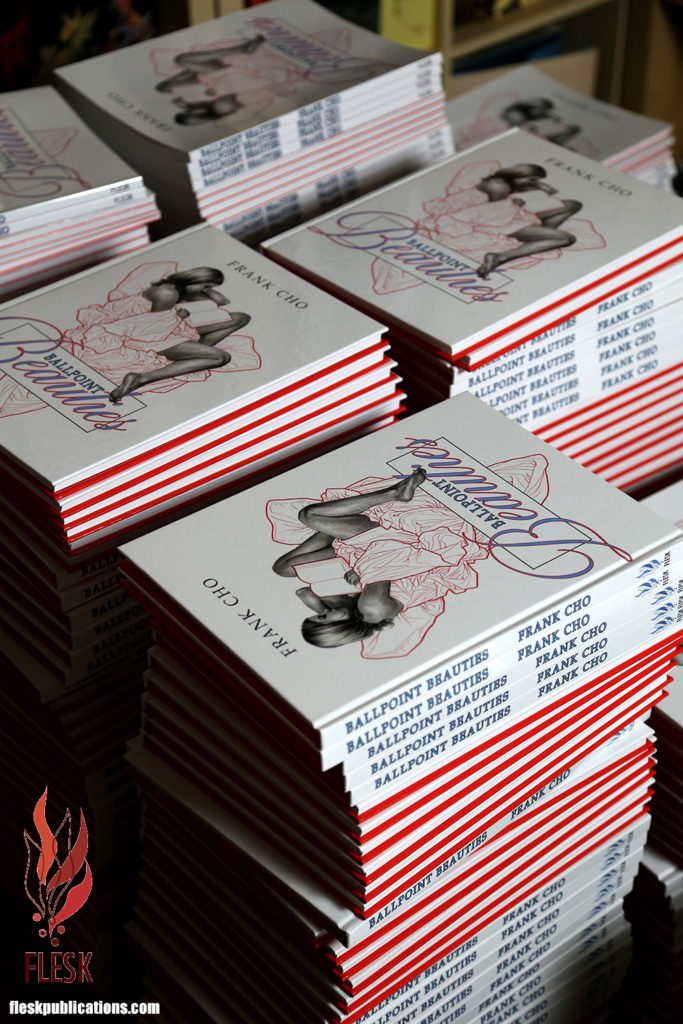
Working with Frank is a good experience. Since neither of us likes drama, and we like to keep things mellow and easy, it’s always worked out smoothly.
The details and release date for The Art of Frank Cho will be revealed soon. I like to have Frank’s books done, or nearly done, before we announce it. Since he is always slammed with work, I don’t want to make an announcement and then have the book delivered late. But, we are very close to being done!
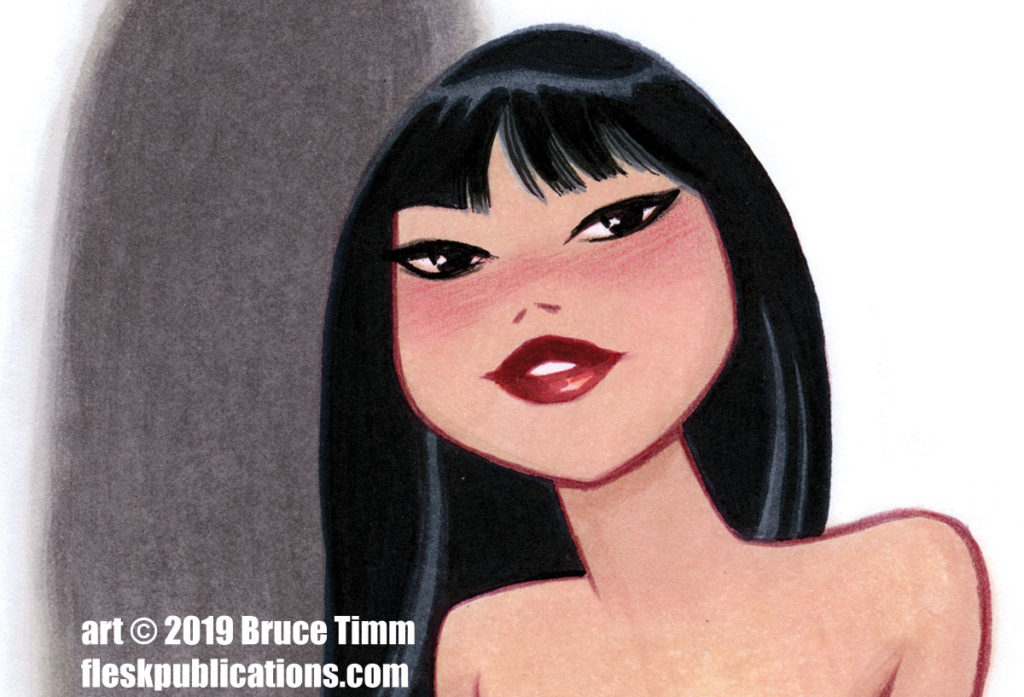
Bruce Timm
At the same time I am working with Bruce Timm on his new book. This will be a collection of his three sold-out show Teasers, then Surrender My Sweet, and will also include a lot of new material. At 208 pages and 9 x 12 inches, there will be a paperback and a hardcover edition available. Bruce is another artist who is very easy to work with. We started on this collection last year. Like with Frank Cho, Bruce can get very busy with his day job. We tend to work a little at a time in-between other projects. Sometimes when he has the time, I may be fully engrossed in my Spectrum duties. Then, when I’m free, he may be tied-up in a new film. Eventually though, we align and get it done. By not setting a deadline it takes the pressure and stress off of us, while allowing for a book that we are proud of.
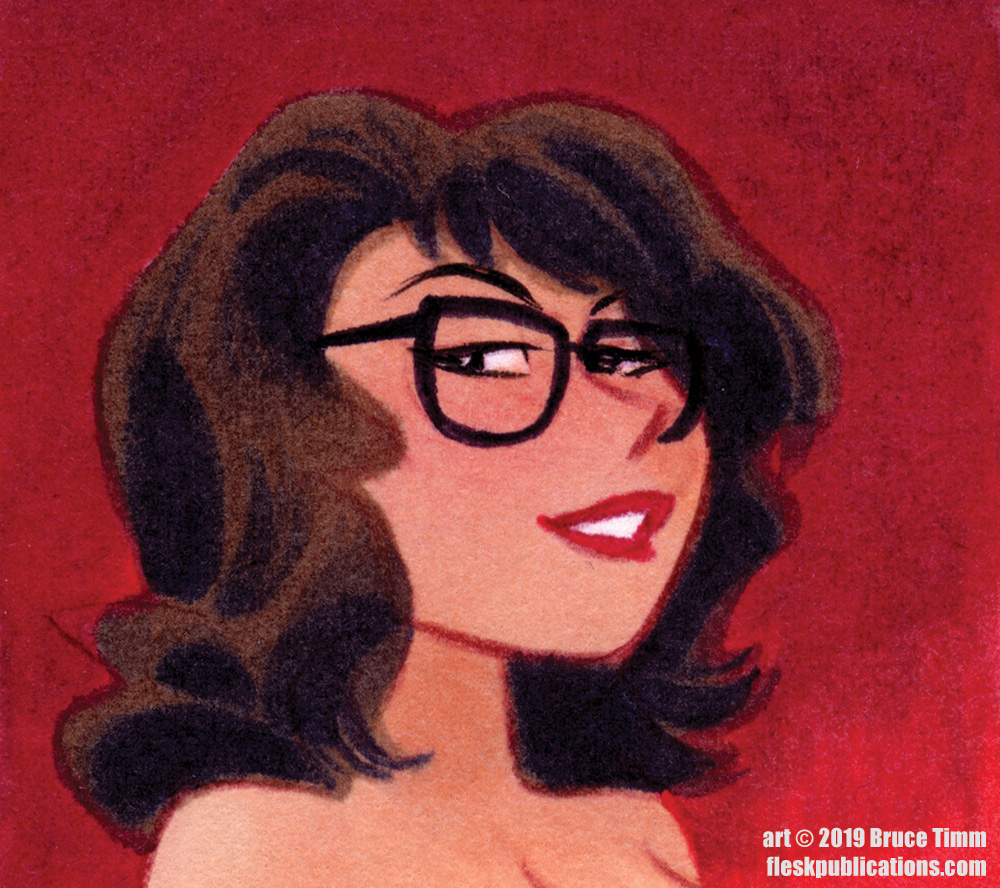
Bruce and I work exclusively through email. Like with Cho, Schultz, and Gianni, he is easy and professional, with the process being very organic. The way we work typically goes like this. I’ll shoot him an email with a book idea that includes a full outline to get the brainstorming sessions started. Bruce replies after each of my paragraphs with notes and thoughts of his own. We go back and forth like this as the book begins to take form. This is a very enjoyable part of the process. I’ve written this before, but Bruce has been very impactful on me in terms of how I design a book. I’ve never worked with him at Warner Bros., or seen him in action there, but based upon my experience while working with him on his books, he is very good at bringing out the best in me, while allowing me to be creative and to try new things.
If you are wondering how I started working with Bruce, it was as simple as my meeting him at a Comic-Con in San Diego and giving him a 2-minute pitch. Since I didn’t know him, I forced myself to keep my book idea with him to just a few minutes. I knew he was a big name, and I was well aware of his stature in the industry and all that he has accomplished. I don’t get nervous or feel intimated when I meet people, so I didn’t practice, or prepare (since both rob me of feeling comfortable—I’m best when I don’t rehearse in advance), but I simply had a general idea of making a book on his personal “after-hours” art. I let him know that I wanted to make a “Bruce Timm” book and never mentioned any of his superhero or daytime work. A handful of follow-up emails over the next 6-8 months resulted in about 200 originals showing up at my house one day. Suffice it to say, I feel very fortunate that he continues to work with me.
Back to this new collection, it is about 95% complete. As soon as Bruce is wrapped up with his latest film we can wrap it up. I’ll make an announcement once we have a release date set.
Brad Kunkle
A third book that I am working on is with Brad Kunkle. Working on three books at a time serves a few purposes. The first is that it is practical. Many of the artists that I work with stay very busy. Between commercial assignments, private commissions, event appearances, exhibits—we all share passion for our dreams and work hard to achieve our vision. When Frank Cho has a Harley Quinn cover deadline or he is attending a show, I may jump over to the Bruce Timm book. Then when I am caught up on Bruce’s book, I’ll send him an email with some notes. Rather than wait for his reply, especially since it may be a week or two since he is involved in a new film, I jump over to Brad’s book. The three books keep me moving and I’m not sitting idle.
Another reason why three books is the magic number is because it keeps me creatively excited. Each book has a different tone; each one features different subject matter; and, each is handled differently. By jumping back and forth between the three, I feel that I can have continually fresh eyes. Rather than serving as a distraction or impeding my flow, the variations help with my flow. My goal is to have contrasting books with different designs so that there are no templates being used.
Getting back to Brad, I first met him in 2006 or 2007 (I have to check my notes to confirm the year) during my first trip to Pennsylvania to visit with Mark Schultz. Mark had invited me out to visit Al and Cori Williamson. Having the chance to see Al at his home was a special moment for me. I’m a huge fan of the EC comics line that came out in the 1950s. Al did a lot of artwork for the Weird Fantasy, Weird Science, and Weird Science-Fantasy titles. He collaborated with Roy Krenkel and Frank Frazetta at times, but it was Al’s work that excited me the most. (This all ties into Brad, I promise.)
After I arrived at Mark’s house, and after we visited with Al and Cori, Mark and I drove back to his house. The next day Mark asked me if he minded if a guest joined us for lunch. Sure, I didn’t mind. This guy pulls up the driveway and Mark introduces Brad Kunkle to me. It turns out that Brad is related to Mark’s wife, Denise. Brad, at the time, was in a band and was doing dog portrait paintings on the side. I recall that he was still deciding which direction to go in.
Brad pulled out a painting from his trunk. It was of a recent portrait that he did of his girlfriend at the time. It was stunning! I looked at his dog portraits online and was amazed at how he captured the personalities of the dogs. We even discussed possibly doing a dog calendar at the time. But, basically, from that fortuitous lunch during a time when I was starting to get my publishing career off the ground, and Brad was beginning to become a painter, we developed a friendship. Over the years we would meet up in various locations during our travels when our lives would intersect such as in Santa Barbara, New York City, and in various cities in Pennsylvania, but never in the same place twice. I was able to congratulate him as he had his first sold-out exhibit, followed by his second, and watched how his notoriety and fame grew, while he always remaining a humble and good guy. Each time we saw one another, we would discuss working together on a book project when the time was right. Well, 13 plus years later after our first meeting, we finally decided that the time is right.
At the moment we are working on his first art book collection. Our main emphasis is for the book to be an art object. There may be more discussion going into this book than any other project that I have worked on before. I want this to be something very special, and unlike anything we have published before. Like all of the books that we do, there is no rush on this. It will get done when it is done. But, I can guarantee that it will be beautiful.
Edwin Austin Abbey
A fourth book that is nearly done is an Edwin Austin Abbey pen-and-ink book that is reproduced from old magazines. I recently pulled it off a hard drive and dusted it off. I had done the majority of work on this book 10 years ago. It is in a similar format and style to the Franklin Booth and Joseph Clement Coll books that I did from 2002-2004. I had lost interest in the Abbey book when I was working with living artists and direct from original art full time. The chance to work with Al Williamson was more exciting! After looking over the Abbey book I realized that it was about 80% done and I liked it a bunch. I asked Kathy to finish cleaning up the remaining art that I hadn’t got to yet, and she put the final polish on the book. All that’s needed is for me to write an introduction or essay. I just need to find the time to write a brief piece to open the book. I’ll leave a detailed essay on Abbey to a future historian. Taking the time to research and write extended essays is not available to me at this stage in my life.
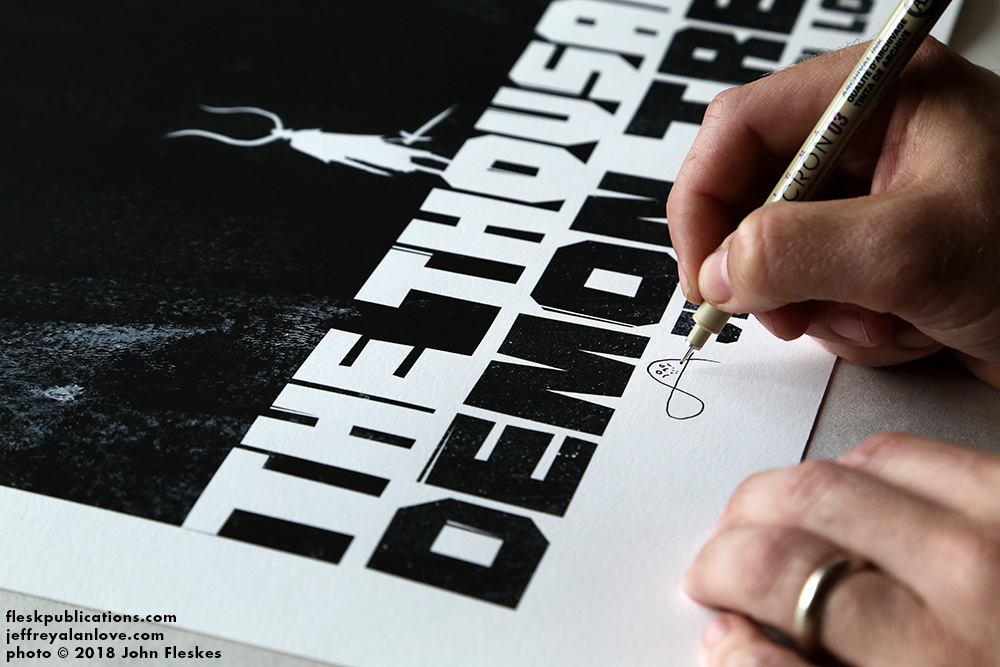
Jeffrey Alan Love
A fifth book in development is a Jeffrey Alan Love sketchbook. Jeff ran this idea by me last year, which I liked and agreed to publish. The concept is simple in that Jeff would paint a piece in his sketchbook of whatever idea came to his mind that day. Once the sketchbook was full, he passed it along to me. Rather than scanning the pages I took it to my friend Greg Preston to get photographed. When scanning art, it projects a bright flat light against the art surface. This works fine in most cases, however I wanted to have more control over the lighting for this object, rather than treating it as a flat surface. There are textures and variations in the way Jeff applies his paint and I didn’t want these nuances to be lost in the scanning process. Jeff was the one who initially suggested that the sketchbook be photographed. My mind immediately began spinning with ideas and techniques for a unique approach to reproducing his sketchbook. With the photography done, I’ve been playing around with two very different approaches to the book and will make a final decision soon. There’s not too much work left to do on this book. I simply need the time to focus on it. My goal is to have it done in the next few months, then I’ll plan a release date.

Making a Book

Publishers typically make new book announcements 10-12 months in advance, then work hard to hit their target dates. I prefer to work in a different way. I like to either finish or have a book 95% done before I advertise and offer a release date. This allows me to take my time and to let the book dictate its own schedule. I can pull this off since I am a small publisher. Once a publisher gets to a certain size and has a larger staff–mapping out schedules is imperative to making sure the business runs smoothly. I can work in both environments, however, lately I’ve been focusing on the book first, followed by advertising it once it is complete.

The high majority of the book work is done by me, although Kathy is quickly growing as a fine bookmaker and will be running her own projects as soon as we can find a new office manager to free up her time. Currently, Kathy runs the office and assists me throughout the week. Some books, like Spectrum, she plays a major role in and does most of the heavy work, and other books, like the Bruce Timm collection where she has a very small hand in. Then, there are other books where we work side-by-side like this new Frank Cho book. The new Tran Nguyen book Kathy did not see until I asked her to give it a final review before I sent it to the printer. We work very organically and fall into a smooth groove based on what is going on in the office and what book work needs to be done.
When we start a new book, I’ll take the first step which is to make something which I call a book map. I do a rough layout with no design in place. It looks as simple as art placed on pages just to get an idea of the flow and placement of how the tone and order of the book will look. Actually, before I do this, I visually scroll through the artwork quickly on the computer to take a mental snapshot and to memorize all of the imagery. I shuffle and organize the images in my head, then place them in the order that I want on the pages. Once this is done, I’ll send a PDF to the artist for them to look at for feedback. This avoids wasting time and effort by streamlining the book early, before the design stage begins. Either through email or over the phone we’ll go over the PDF together. Based on their comments and reactions I’ll tighten up the book further, shift pages and art around, and I may group things differently, until we have a solid book map to work with.
At this stage I’ll start inserting text, if any. Again, I’m not paying any attention to design. I’m simply dropping text on pages next to the art that it is associated with. Before the text is dropped into the book it is fully edited and finalized. I don’t write in the design program, or make changes to the text after it is inserted into the book. I want to be efficient and not waste time by repeating unnecessary steps. I’d rather spend time with my kid than do something a second time. Once the text and art for each page is finalized, then I’ll start designing the book. I’ll only design a handful of book spreads first, then send it to the artist for their feedback. That way we can nail the theme and design elements early, before applying it to the full book. After we settle on the design, I’ll go in and apply the master design to the full book. I’ll send PDFs regularly to the artist to give opportunities to make changes and to provide feedback in the early stages. The last thing I want to do is to make big radical changes after I’ve already applied the theme to the book. It’s about doing the heavy lifting early on, really paying attention to the early mapping and design foundation to make sure that the rest of the process is smooth and easy. I actually enjoy the heavy creative lifting in the beginning stages, then fall into cruise control for the middle stage. The final stage includes all double checks on the art and text to look for mistakes. Then I package it up and send it off to the printer.
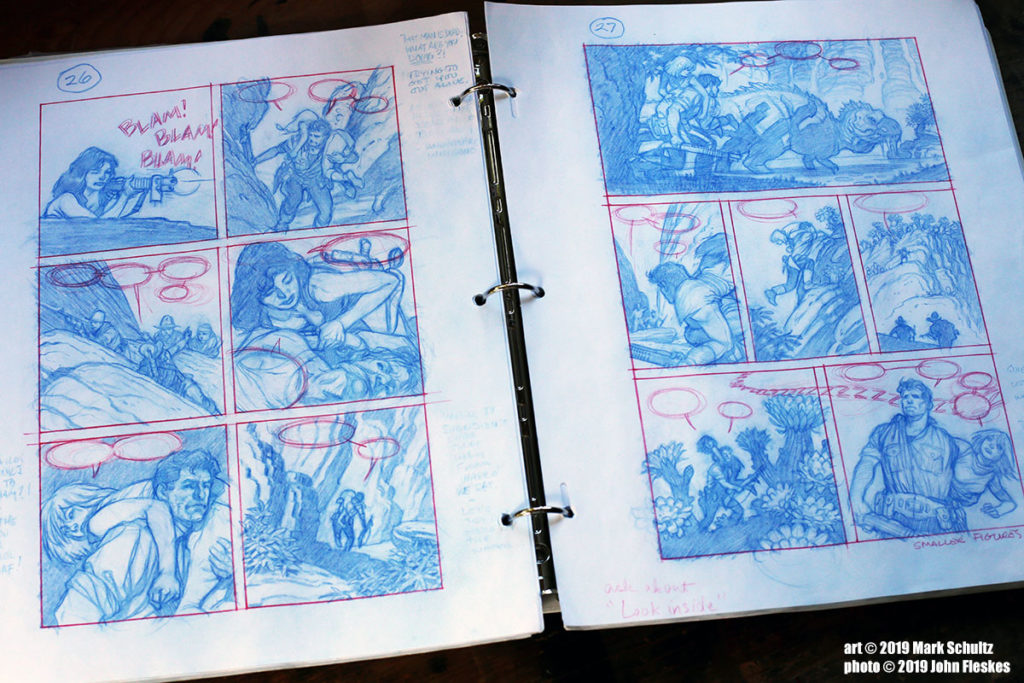
That brings you up to date on our next five books. Lots more to come! I have a backlog of 10 more that I am pretty excited to move forward with after these. They include the next Arthur Adams, J.A.W. Cooper, Terry Dodson, Mark Schultz, William Stout, and Al Williamson titles—along with Spectrum 27.
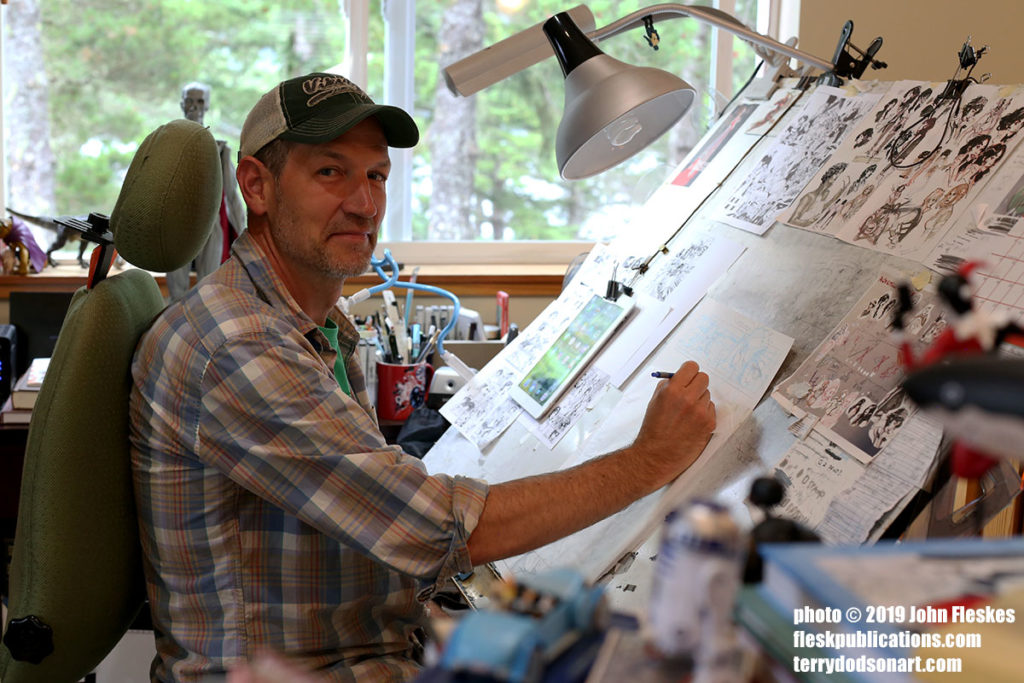
Thanks for reading.
Enjoy,
John
Flesk Publications
Flesk Publications on Facebook
Spectrum Fantastic Art
Spectrum Fantastic Art Live
Spectrum Fantastic Art Live on Facebook
Text and photos copyright © 2019 John Fleskes. Videos © 2019 Flesk Publications. Artwork © 2019 its respective artists. All Rights reserved.